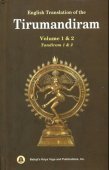Pancakshara, Pañcākṣara, Pancan-akshara, Pamcakshara: 10 definitions
Introduction:
Pancakshara means something in Buddhism, Pali, Hinduism, Sanskrit. If you want to know the exact meaning, history, etymology or English translation of this term then check out the descriptions on this page. Add your comment or reference to a book if you want to contribute to this summary article.
The Sanskrit term Pañcākṣara can be transliterated into English as Pancaksara or Pancakshara, using the IAST transliteration scheme (?).
Alternative spellings of this word include Panchakshara.
Images (photo gallery)
In Hinduism
Shaivism (Shaiva philosophy)
Source: Shodhganga: The saurapurana - a critical study (shaivism)Pañcākṣara (पञ्चाक्षर) or Pañcākṣaramantra refers to the mantra known as “oṃ namaḥ śivāya” and is used in the worship of Śiva.—If a person offers a leaf or flower with the five-syllabled mantra once even to Lord Śiva gets eternal merits. It is stated that seven crores of mahāmantras came out of the mouth of Śiva but none is equal to pañcākṣara-mantra. If a person Utters the pañcākṣara-mantra becomes a follower of Śiva and gets release from the bondage of Saṃsāra.

Shaiva (शैव, śaiva) or Shaivism (śaivism) represents a tradition of Hinduism worshiping Shiva as the supreme being. Closely related to Shaktism, Shaiva literature includes a range of scriptures, including Tantras, while the root of this tradition may be traced back to the ancient Vedas.
Purana and Itihasa (epic history)
Source: archive.org: Shiva Purana - English TranslationPañcākṣara (पञ्चाक्षर) (Cf. Śarākṣara) refers to “(the) five-syllabled (mantra of Śiva)”, according to the Śivapurāṇa 2.3.21 (“Nārada instructs Pārvatī”).—Accordingly, after Pārvatī said to Nārada: “On hearing these words of Pārvatī, O excellent sage, you taught her the five-syllabled mantra of Śiva [i.e., pañcākṣara—paṃcākṣaraṃ śambhumantraṃ] in accordance with the sacred law. O sage, generating her faith you told her the supreme efficacy of the great formula thus”.

The Purana (पुराण, purāṇas) refers to Sanskrit literature preserving ancient India’s vast cultural history, including historical legends, religious ceremonies, various arts and sciences. The eighteen mahapuranas total over 400,000 shlokas (metrical couplets) and date to at least several centuries BCE.
Shaktism (Shakta philosophy)
Source: Google Books: ManthanabhairavatantramPañcākṣara (पञ्चाक्षर) refers to the “five-syllable (Vidyā)”, according to the Manthānabhairavatantra, a vast sprawling work that belongs to a corpus of Tantric texts concerned with the worship of the goddess Kubjikā.—Accordingly, “(Now) I will tell (you) about the arising (of the tradition) that gives bliss and accomplishment in the Kṛta Age [...] (There) the (goddess) Kulālikā has five faces. [...] Endowed with the eighteen practices, she wears yellow clothes and is auspicious. Residing in the Five-syllable (pañcākṣara) (Vidyā), she is the Girl Kulakaulinī. They have four Lions (as their seats), namely, the four U (Uḍḍīśanātha), Ṣa (Ṣaṣṭhanātha), Ca (Caryānātha) and Mi (Mitranātha)”.

Shakta (शाक्त, śākta) or Shaktism (śāktism) represents a tradition of Hinduism where the Goddess (Devi) is revered and worshipped. Shakta literature includes a range of scriptures, including various Agamas and Tantras, although its roots may be traced back to the Vedas.
In Buddhism
Tibetan Buddhism (Vajrayana or tantric Buddhism)
Source: OSU Press: Cakrasamvara SamadhiPañcākṣara (पञ्चाक्षर) refers to “five syllables”, according to the Guru Mandala Worship (maṇḍalārcana) ritual often performed in combination with the Cakrasaṃvara Samādhi, which refers to the primary pūjā and sādhanā practice of Newah Mahāyāna-Vajrayāna Buddhists in Nepal.—Accordingly, “Vairocana Buddha in the middle, Akṣyobhya abiding eastward, Amitābha in the west, and Ratnasaṃbhava in the south, Also Amoghasiddhi in the north, the permanent five Tathāgata, White, dark blue (and) yellow, one of the reds, (and) dark green, Going, sitting on a lion, elephant, horse, peacock, (and) an eagle, Five syllables (pañcākṣara) arising together, Pañca Buddha, I give homage”.

Tibetan Buddhism includes schools such as Nyingma, Kadampa, Kagyu and Gelug. Their primary canon of literature is divided in two broad categories: The Kangyur, which consists of Buddha’s words, and the Tengyur, which includes commentaries from various sources. Esotericism and tantra techniques (vajrayāna) are collected indepently.
Languages of India and abroad
Sanskrit dictionary
Source: Cologne Digital Sanskrit Dictionaries: Cappeller Sanskrit-English DictionaryPañcākṣara (पञ्चाक्षर).—[adjective] five-syllabled.
Source: Cologne Digital Sanskrit Dictionaries: Aufrecht Catalogus CatalogorumPañcākṣara (पञ्चाक्षर) as mentioned in Aufrecht’s Catalogus Catalogorum:—poet. [Sūktikarṇāmṛta by Śrīdharadāsa]
Source: Cologne Digital Sanskrit Dictionaries: Monier-Williams Sanskrit-English Dictionary1) Pañcakṣāra (पञ्चक्षार):—[=pañca-kṣāra] [from pañca] n. = -lavaṇa q.v.
2) Pañcākṣara (पञ्चाक्षर):—[from pañca] mfn. consisting of 5 syllables, [Vājasaneyi-saṃhitā; Aitareya-brāhmaṇa] etc.
3) [v.s. ...] m. Name of a poet
[Sanskrit to German]
Sanskrit, also spelled संस्कृतम् (saṃskṛtam), is an ancient language of India commonly seen as the grandmother of the Indo-European language family (even English!). Closely allied with Prakrit and Pali, Sanskrit is more exhaustive in both grammar and terms and has the most extensive collection of literature in the world, greatly surpassing its sister-languages Greek and Latin.
Kannada-English dictionary
Source: Alar: Kannada-English corpusPaṃcākṣara (ಪಂಚಾಕ್ಷರ):—[noun] = ಪಂಚಾಕ್ಷರಿ [pamcakshari].
Kannada is a Dravidian language (as opposed to the Indo-European language family) mainly spoken in the southwestern region of India.
See also (Relevant definitions)
Partial matches: Kshara, Akshara, Panca.
Starts with: Pancaksharaguru, Pancaksharakalpa, Pancaksharam, Pancaksharamahatmya, Pancaksharamantra, Pancaksharamaya, Pancaksharashas, Pancaksharastotra.
Full-text (+1): Pancaksharamahatmya, Pancaksharam, Pancaksharakalpa, Pancaksharashas, Pancaksharamaya, Shivapancaksharastotra, Shivamantra, Pancakshari, Anushtubgarbha, Tirumantiram, Pancatcaram, Ancelettu, Ainteluttu, Kalavati, Sharakshara, Bilvapatra, Kavicandra, Kaka, Diksa, Shaivism.
Relevant text
Search found 11 books and stories containing Pancakshara, Pañcākṣara, Panca-ksara, Pañcakṣāra, Pañca-kṣāra, Panca-kshara, Pancaksara, Pancan-akshara, Pamcakshara, Paṃcākṣara, Pancākṣara, Pamcaksara, Pancan-kshara, Pañcan-akṣāra, Pañca-akṣāra, Pancan-aksara, Panca-aksara; (plurals include: Pancaksharas, Pañcākṣaras, ksaras, Pañcakṣāras, kṣāras, ksharas, Pancaksaras, aksharas, Pamcaksharas, Paṃcākṣaras, Pancākṣaras, Pamcaksaras, akṣāras, aksaras). You can also click to the full overview containing English textual excerpts. Below are direct links for the most relevant articles:
Sivaprakasam (Study in Bondage and Liberation) (by N. Veerappan)
Divine Help of Pancaksara < [Chapter 6 - Means to Release]
Dasha Karya and Guru < [Chapter 7 - Liberation]
Shaiva Upanishads (A Critical Study) (by Arpita Chakraborty)
19. Śiva Pañcākṣara < [Chapter 5 - Essence of Pañcabrahma Upaniṣad]
17. The esoteric significance of Five Faces of Lord Śiva < [Chapter 5 - Essence of Pañcabrahma Upaniṣad]
18. Sadāśiva Cakra < [Chapter 5 - Essence of Pañcabrahma Upaniṣad]
Puranic encyclopaedia (by Vettam Mani)
The Religion and Philosophy of Tevaram (Thevaram) (by M. A. Dorai Rangaswamy)
Nayanar 14: Anaya < [Volume 4.1.1 - A comparative study of the Shaivite saints the Thiruthondathogai]
Nayanar 16: Muruga (Muruka) < [Volume 4.1.1 - A comparative study of the Shaivite saints the Thiruthondathogai]
Nayanar 33: Somasi Mara (Comacimara) < [Volume 4.1.1 - A comparative study of the Shaivite saints the Thiruthondathogai]
The Agni Purana (by N. Gangadharan)
The Linga Purana (by J. L. Shastri)
Chapter 85 - The glory of the five-syllabled Mantra (pañcākṣara-māhātmya) < [Section 1 - Uttarabhāga]
Chapter 104 - The eulogy of the lord (devastuti) < [Section 1 - Uttarabhāga]
Chapter 24 - The mode of worship of Śiva (Continued) < [Section 2 - Pūrvabhāga]
Related products

